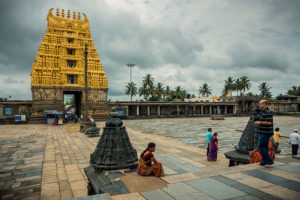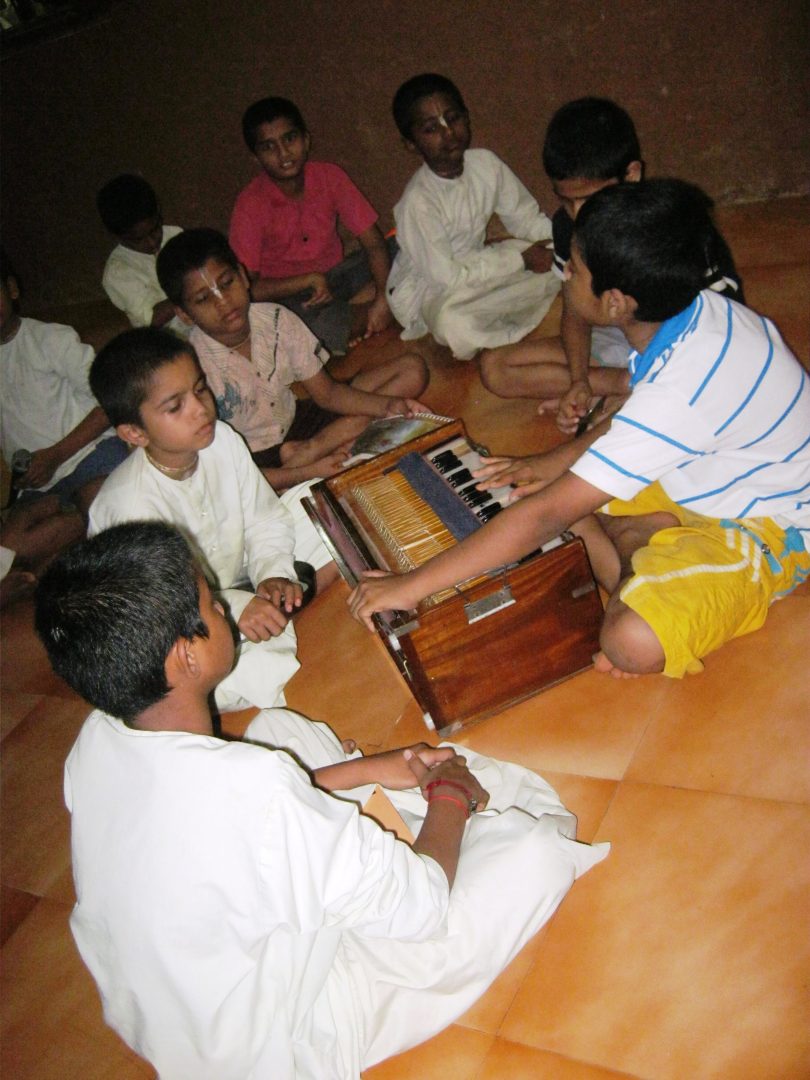I find being Hindu or Hinduism as more a way of life than a religion. Hinduism teaches a non-violent approach in life, respect for elders, going forward by looking backwards in history to guide our actions. Most people cannot see past the many idols and jump to conclusions too readily rather than to delve further.
When I first joined a prayer group in Malaysia, I found myself warmly welcomed despite myself being the only Chinese there. I had never really been to a prayer session before even though I had attended many temple celebrations as a child. Having no idea as to what to expect, knowing no one there and going only on my own inner guide as to how to behave, I was actually quite nervous when I approached the centre but all those feelings were forgotten when a kindly woman took me under her wing.
The start of the bhajan session
We first observed a few minutes of silence to settle down before the spiritual leader started the session with some chants to the accompaniment of a small bell. Then we started off the bhajan session. I find the bhajans similar to the choirs in church.
Personally, I love the bhajans in Sanskrit and somehow could learn them with ease which is also the reason why people at the centre call me an old soul. In Malaysia, all the centres that I have been to always start a session with a bhajan dedicated to Ganesha as he is the Lord of Destruction, signifying the destruction of obstacles in our path while we attempt to devote ourselves to our inner selves. The last song to end the session will always be one dedicated to Lord Muruga, the destroyer of evil.
The Arathi and Prasadam
After which the Arathi is done by devotees and during my period at the centre, I was never left out when the families went to perform the Arathi together. Then the prasadam is served to all who stay and mingle to get to know one another. I attended regularly and never thought that I would be missed if I just missed one but the week I missed a session, my sisters’ were frantic with worry for me as they knew I stayed alone.
 So you see why I say Hinduism is a way of life? A person is adopted into the circle warmly, taught the ways to behave, dress and worship but never coerced into anything against her will. I can truly say that I enjoyed the companionship of my sisters’ so much that before long I was yearning for their motherland, to see and experience all that I had read and learned in the Gitas.
So you see why I say Hinduism is a way of life? A person is adopted into the circle warmly, taught the ways to behave, dress and worship but never coerced into anything against her will. I can truly say that I enjoyed the companionship of my sisters’ so much that before long I was yearning for their motherland, to see and experience all that I had read and learned in the Gitas.
They warned me that I was jumping in too soon but the spiritual advisor was sure that I would hear my own calling and in my own time, it was not for anyone to question or interfere. So I was only about three months into the culture when I felt the sudden unstoppable urge to visit India. I was told that nobody arrives at the ashram unless he/she was meant to. Being the impulsive person that I have always been, I made no plans, just bought a ticket on Friday for a Tuesday flight, went to apply for an express tourist visa on Monday and was in an ashram on Tuesday night.
When I say Hinduism is a way of life, I mean it in the whole sense of the word.
My three-week experience in the ashram, living as a true vegetarian, volunteering with community work and attending prayer sessions twice a day changed me in a way that many who know me well have been able to see.






